2022
(25) S. Patra, J. B. Claude, and J. Wenger, "Fluorescence brightness, photostability, and energy transfer enhancement of immobilized single molecules in zero-mode waveguide nanoapertures", ACS Photonics., 2022, DOI:10.1021/acsphotonics.2c00349. IF 7.529
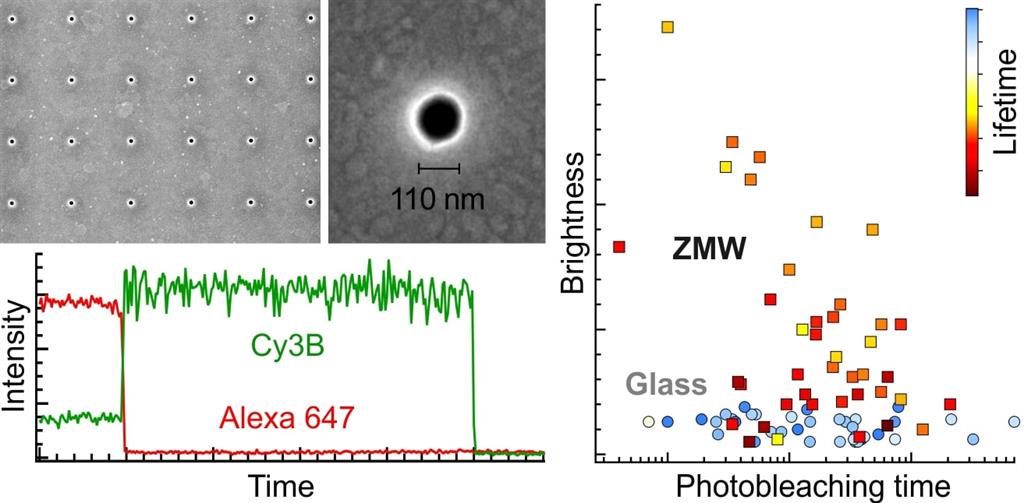
Significance: Studied the influence of Zero-Mode Waveguide (ZMW) nanoaperture on the single immobilized Cy3B and Alexa 647 fluorophores, detailing the interplay between brightness, lifetime, photobleaching time, total number of emitted photons and Förster resonance energy transfer (FRET).
2021
(24) S. Patra, J. B. Claude, J. V. Naubron, and J. Wenger, "Fast interaction dynamics of G-quadruplex and RGG-rich peptides unveiled in zero-mode waveguides", Nucleic Acids Res., 49 (21), 12348-12357 (2021). IF 16.971
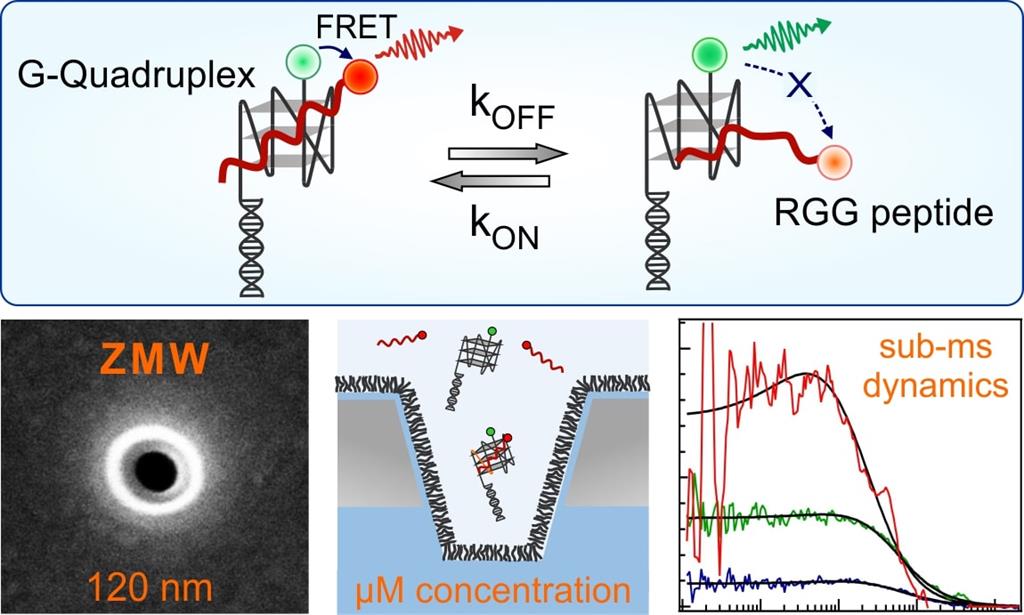
Significance: Studied biomolecular interaction dynamics on the single molecule level at physiologically relevant µM concentrations.
2020
(23) M. Baibakov, A. Barulin, P. Roy, J. B. Claude, S. Patra, J. Wenger, “Zero-mode waveguides can be made better: fluorescence enhancement with rectangular aluminum nanoapertures from the visible to the deep ultraviolet”, Nanoscale Adv., 2 (9), 4153-4160 (2020). IF 4.38
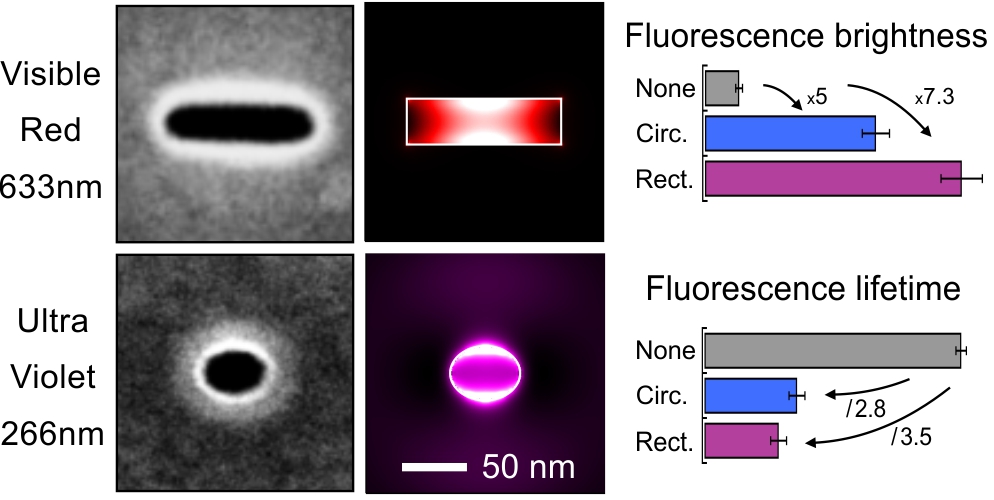
Significance: Demonstrated that rectangular shaped metallic nanostructures (Zero-Mode Waveguide) further improves the detection of single molecule fluorescence over their circularly shaped counterparts and therefore, opens new possibilities to achieve brighter fluorescence emission, faster lifetime and smaller detection volume.
(22) M. Baibakov, S. Patra, J.B. Claude, J. Wenger, “Long-Range Single-Molecule Förster Resonance Energy Transfer between Alexa Dyes in Zero-Mode Waveguides”, ACS Omega, 5 (12), 6947-6955 (2020). IF 3.512
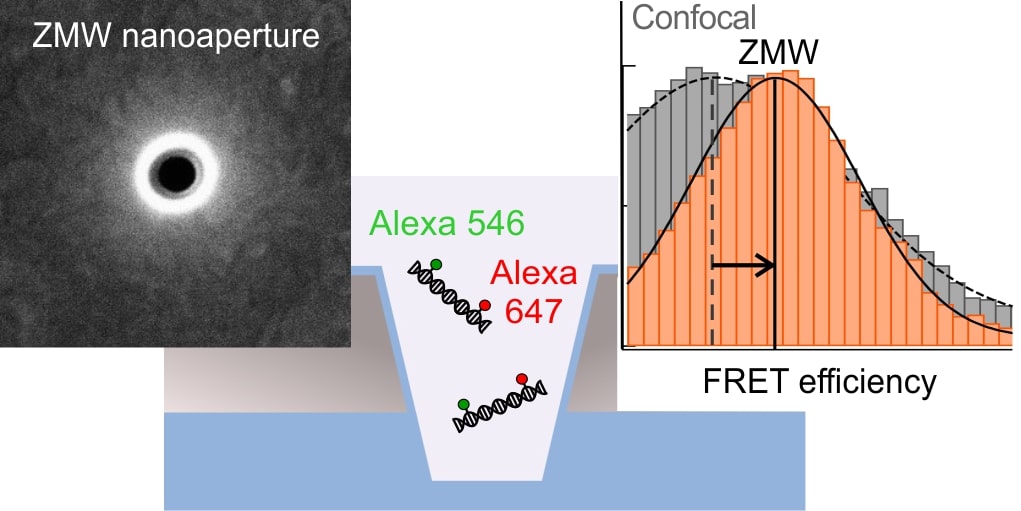
Significance: Demonstrated that single molecule FRET enhancement inside ZMW is quite general and does not depend on the type of fluorescent dyes used.
(21) S. Patra, M. Baibakov, J. B. Claude, J. Wenger, “Surface passivation of zero-mode waveguide nanostructures: benchmarking protocols and fluorescent labels”, Scientific Reports, 10:5235 (2020). IF 4.379
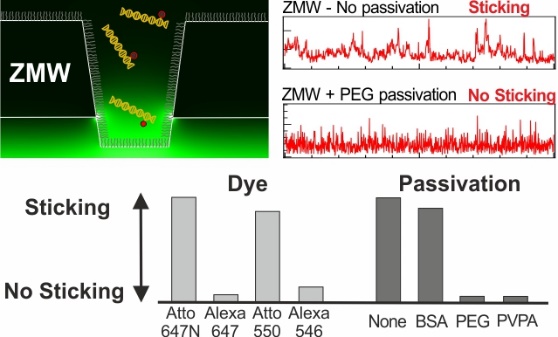
Significance: A benchmark study optimizing both the choice of the fluorescent dye and the surface passivation protocol that are highly significant to expand the use of ZMWs for single molecule fluorescence applications.
2019
(20) A. Barulin, J. B. Calude, S. Patra, N. Bonod, J. Wenger, “Deep ultraviolet plasmonic enhancement of single protein autofluorescence in zero-mode waveguides”, Nano Lett. 19(10), 7434-7442 (2019). IF 11.189
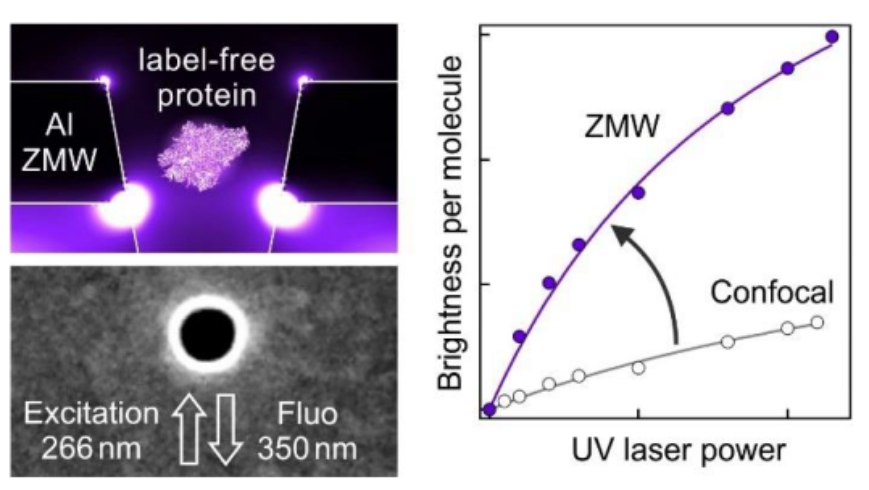
Significance: First demonstration of UV plasmonic enhancement of single protein intrinsic emission using zero-mode waveguide nanoaperture.
(19) A. Barulin, J. B. Claude, S. Patra, A. Moreau, J. Lumeau, J. Wenger, “Preventing aluminium photocorrosion for ultraviolet plasmonics”, J. Phys. Chem. Lett. 10 (19), 5700-5707 (2019). IF 6.475
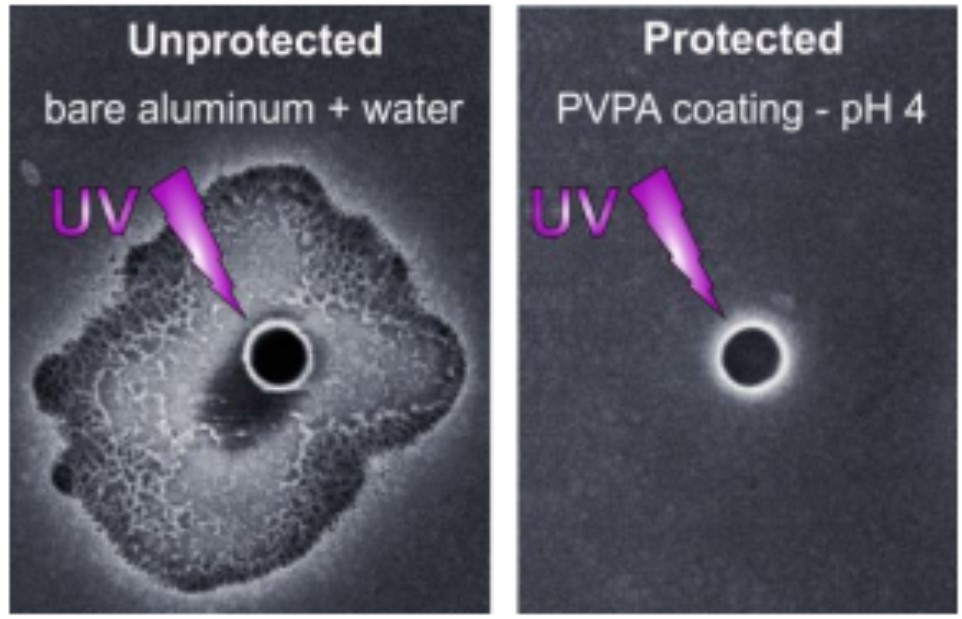
Significance: We show that the aluminum photocorrosion is related to the nonlinear absorption by water in the UV range leading to the production of hydroxyl radicals. Different corrosion protection approaches are tested using scavengers for reactive oxygen species and polymer layers deposited on top of the aluminum structures.
(18) M. Baibakov, S. Patra, J. B. Claude, A. Moreau, J. Lumeau, J. Wenger, “Extending single-molecule Fo¨rster resonance energy transfer (FRET) range beyond 10 nanometers in zero-mode waveguides”, ACS Nano, 13 (7), 8469-8480 (2019). (Equal contribution) IF 15.881
(17) S. Patra, V. Schuabb, I. Kiesel, J. M. Knop, R. Oliva, R. Winter, “Exploring the effects of cosolutes and crowding on the volumetric and kinetic profile of the conformational dynamics of a poly dA loop DNA hairpin: a single-molecule FRET study”, Nucleic Acids Res. 47 (2), 981–996 (2019). IF 16.971
(16) L. Li, M. Dwivedi, S. Patra , N. Erwin, S. Möbitz, R. Winter, “Probing colocalization of N-Ras and K-Ras4B lipoproteins in model biomembranes”,ChemBioChem, 20 (9), 1190-1195 (2019). IF 3.164
2018
(15) J. M. Knop, S. Patra, B. Harish, C. A. Royer, R. Winter, “The deep sea osmolyte TMAO and macromolecular crowders rescue the antiparallel conformation of the human telomeric G-quadruplex from urea and pressure stress”, Chem. Eur. J. 24 (54), 14346-14351 (2018). IF 5.236
(14) S. Patra, C. Anders, P. H. Schummel, R. Winter, “Antagonistic effects of natural osmolyte mixtures and hydrostatic pressure on the conformational dynamics of a DNA hairpin probed at the single-molecule level”, Phys. Chem. Chem. Phys. 20 (19), 13159-13170 (2018). (Equal Contribution) IF 3.676
2017
(13) S. Patra, C. Anders, N. Erwin, R. Winter, “Osmolyte Effects on the Conformational Dynamics of a DNA Hairpin at Ambient and Extreme Environmental Conditions”, Angew. Chem. Int. Ed. 56 (18), 5045-5049 (2017). IF 15.336
(12) M. Gao, C. Held, S. Patra, L. Arns, G. Sadowski, R. Winter, “Crowders and Cosolvents-Major Contributors to the Cellular Millieu and Efficient Means to Counteract Environmental Stresses”. ChemPhysChem. 18 (21), 2951-2972 (2017). IF 3.102
2016
(11) N. Erwin, S. Patra, M. Dwivedi, K. Weise, R. Winter, “Influence of isoform-specific Ras lipidation motifs on protein partitioning and dynamics in model membrane systems of various complexity”, Biol. Chem. 398 (5-6), 547–563 (2016). IF 3.014
(10) N. Erwin, S. Patra, R. Winter, “Probing conformational and functional substates of calmodulin by high pressure FTIR spectroscopy: influence of Ca2+ binding and the hypervariable region of K-Ras4B”, Phys. Chem. Chem. Phys. 18 (43), 30020-30028 (2016). IF 3.676
(9) S. Patra, N. Erwin, R. Winter, “Translational dynamics of lipidated Ras proteins in the presence of crowding Agents and compatible osmolytes”, ChemPhysChem. 17 (14), 2164-2169 (2016). IF 3.102
(8) S. Seth, N. Mondal, S. Patra, A. Samanta, “Fluorescence blinking and photoactivation of all inorganic perovskite nanocrystals CsPbBr3 and CsPbBr2I”, J. Phys. Chem. Lett. 7 (2), 266-271 (2016). IF 6.475
2015
(7) S. Patra, S. Seth, A. Samanta, “Effect of controlled deposition of ZnS shell on the photostability of CdTe quantum dots as studied by conventional fluorescence and FCS techniques”, ChemPhysChem. 16 (18), 3871-3876 (2015). IF 3.102
2014
(6) S. Patra, A. Samanta, “Effect of capping agent and medium on light-induced variation of the luminescence properties of CdTe quantum dots: A study based on fluorescence correlation spectroscopy, steady-state and time-resolved fluorescence techniques”, J. Phys. Chem. C, 118 (31), 18187-18196 (2014). IF 4.309
2013
(5) S. Patra, A. Samanta, “A fluorescence correlation spectroscopy, steady-state, and time-resolved fluorescence study of modulation of photophysical properties of mercaptopropionic acid capped CdTe quantum dots upon exposure to light”, J. Phys. Chem. C, 117 (44), 23313-23321 (2013). IF 4.309
(4) A. Pabbathi, S. Patra, A. Samanta, “Structural transformation of bovine serum albumin induced by dimethyl sulfoxide and probed by fluorescence correlation spectroscopy and additional methods”, ChemPhysChem. 14 (11), 2441-2449 (2013). IF 3.102
2012
(3) S. Patra, A. Samanta, “Microheterogeneity of some imidazolium ionic liquids as revealed by fluorescence correlation spectroscopy and lifetime studies”, J. Phys. Chem. B 116 (40), 12275-12283 (2012). IF 2.923
(2) S. Patra, K. Santhosh, A. Pabbathi, A. Samanta, “Diffusion of organic dyes in bovine serum albumin solution studied by fluorescence correlation spectroscopy”, RSC Advances 2 (14), 6079-6086 (2012). IF 3.36
2011
(1) K. Santhosh, S. Patra, S. Soumya, D. C. Khara, A. Samanta, “Fluorescence quenching of CdS quantum dots by 4-Azetidinyl-7-Nitrobenz-2-Oxa-1,3-Diazole: A mechanistic study”, ChemPhysChem. 12 (15), 2735-2741 (2011). IF 3.102